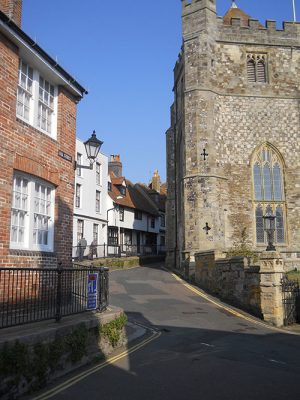
A brief history of Hastings
Hastings developed as a Saxon settlement called Haestingas, which means Haesta’s people. During Roman times, this area was important for mining iron ore and the production of iron, and Hastings was a thriving port. By the 11th century, it was a small market town, and became famous for the Battle of Hastings in 1066, when Duke William of Normandy invaded England and defeated the Saxon King Harold near Hastings.

During medieval times Hastings was one of the Cinque Ports, important for providing ships for the defence of England, but due to storm damage, coastal changes and French raids the port declined after the 13th century. A strong link with the sea is still maintained today by the largest beach-based fleet in England.
In the 18th century Hastings was ideally located for smuggling, which was profitable because of high taxes on luxury goods. St Clement’s Caves on the West Hill, used by the smugglers, is now a popular tourist attraction.
In the early 19th century Hastings became one of the most fashionable seaside resorts in Britain, as sea water was supposed to have healthy properties, and the town expanded with the development of St Leonards. With the coming of the railway far more people could travel to the seaside, and Hastings grew rapidly as a popular seaside resort. In 1801 the population was only 3,175, in 1831 it was over 10,000, and by 1891 nearly 60,000.
Today, seaside resorts have declined throughout Britain due to cheap foreign travel, but Hastings still maintains a unique place in the history and culture of Sussex.

